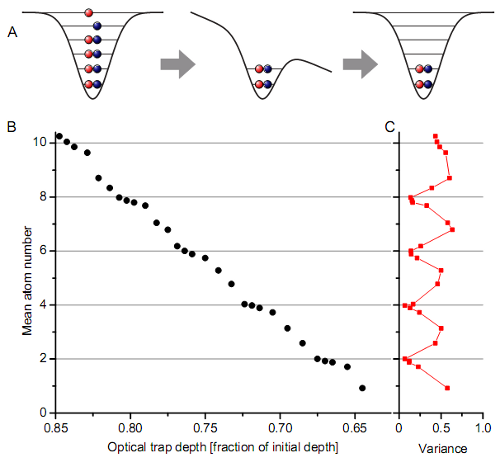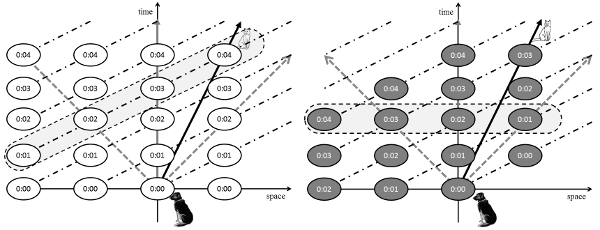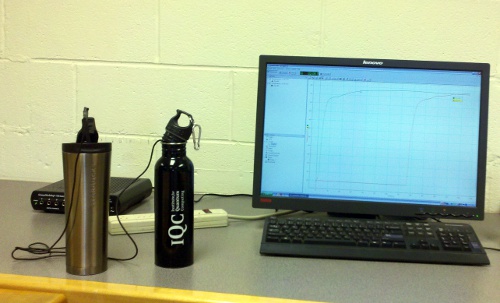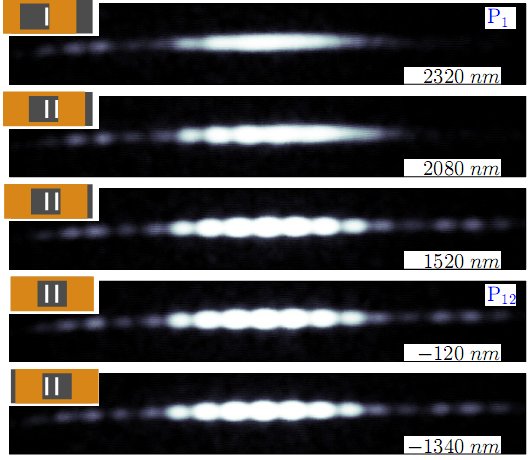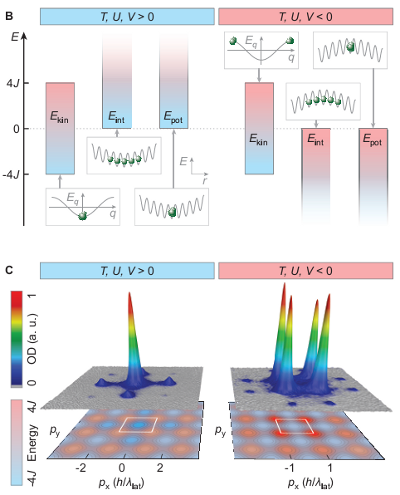A few months back, I got a call from a writer at a physics magazine, asking for comments on a controversy within AMO physics. I read a bunch of papers, and really didn’t quite understand the problem; not so much the issue at stake, but why it was so heated. When I spoke to the… Continue reading Of Controversies and Clocks
Category: Experiment
Few-Body Systems: Cooler Than You Might Think
Hey, dude? Yeah, what’s up? I’m not normally the one who initiates this, but I was wondering: When you were at DAMOP last week, did you see any really neat physics? Oh, sure, tons of stuff. It was a little thinner than some past meetings– a lot of the Usual Suspects didn’t make the trip–… Continue reading Few-Body Systems: Cooler Than You Might Think
Experiment and Theory in the Popular Imagination
A little while back, I posted about the pro-theorist bias in popular physics, and Ashutosh Jogalekar offers a long and detailed response, which of course was posted on a day when I spent six hours driving to Quebec City for a conference. Sigh. Happily, ZapperZ and Tom at Swans On Tea offer more or less… Continue reading Experiment and Theory in the Popular Imagination
American Physicists and the Under-rating of Experiments
At Scientific American’s blog network, Ashutosh Jogalekar muses about the “greatest American physicist”, eventually voting for Josiah Willard Gibbs, one of the pioneers of statistical mechanics. As both times I took StatMech (as an undergrad and in grad school), it was at 8:30 in the morning, I retain almost no memory of the subject, and… Continue reading American Physicists and the Under-rating of Experiments
Time Is What You Measure With a Clock
Last year, Alan Alda posed a challenge to science communicators, to explain a flame in terms that an 11-year old could understand. this drew a lot of responses, and some very good winners. This year’s contest, though still called the “Flame Challenge,” asked for an answer to the question “What Is Time?” This is a… Continue reading Time Is What You Measure With a Clock
How Good Is My Starbucks Cup?
It’s been a while since I’ve done a post over-analyzing some everyday situation, because I’ve been too busy to do any silly experiments. We’re on break this week, though, so I took a little time Monday to bring excessive technology to bear on the critically important scientific question: how good is my insulated Starbucks cup?… Continue reading How Good Is My Starbucks Cup?
Modern Physics and Scientific Thinking
Yesterday’s big post on why I think people should embrace scientific thinking in a more conscious way than they do already (because my claim is that most people already use scientific thinking, they’re just not aware that they’re doing it) is clearly a kind of explanation of the reason behind my next book, but what… Continue reading Modern Physics and Scientific Thinking
Proving Bethe Wrong: On Theory Inspiring Experiment
As research for the work-in-progress, I recently read Luis Alvarez‘s autobiography, Alvarez: Adventures of a Physicist, which contains a passage that I was reminded of last night while reading another book, that seems like an amusing follow-up to yesterday’s rant about theory and experiment. This is from the end of the chapter where he joined… Continue reading Proving Bethe Wrong: On Theory Inspiring Experiment
Experiments Are Not Afterthoughts
There’s been a bunch of talk recently about a poll on quantum interpretations that showed physicists badly divided between the various interpretations– Copenhagen, Many-Worlds, etc.– a result which isn’t actually very surprising. Sean Carroll declares that the summary plot is “The Most Embarrassing Graph in Modern Physics, which I think is a bit of an… Continue reading Experiments Are Not Afterthoughts
How Do You Make Negative Temperatures, Anyway?
Last week’s post talked about the general idea of negative temperature, with reference to this much-talked-about Science paper (which also comes in a free arxiv version from which the figures used here are taken). I didn’t go into the details of how they made a negative temperature gas, though, and as it’s both very clever… Continue reading How Do You Make Negative Temperatures, Anyway?

